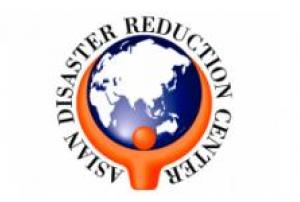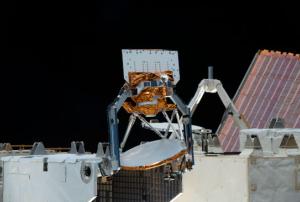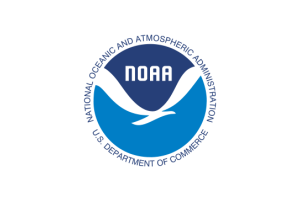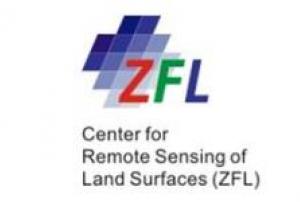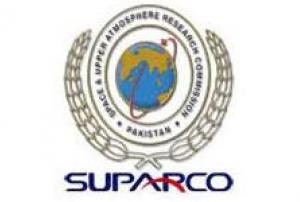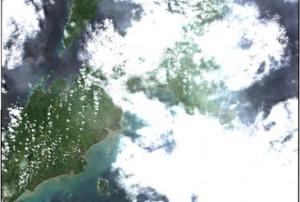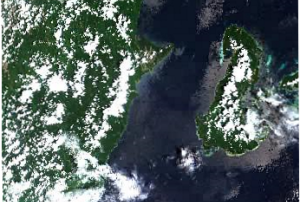Severe Storm
Definition
Facts and figures
Further information
UN-SPIDER Regional Support Offices with hazard-specific expertise
Related content on the Knowledge Portal
Le Centre Asiatique pour la Prévention des Catastrophes (ADRC) et le Bureau des Affaires Spatiales des Nations Unies (UNOOSA) ont signé l'accord de coopération sur l'établissement du Bureau Régional d'Appui (BRA) ONU-SPIDER de l'ADRC à l'occasion de la 52ème session du Comité des Utilisations Pacifiques de l'Espace Extérieur (COPUOS) le 4 juin 2009.
NASA has developed two weather instruments known as COWVR (Compact Ocean Wind Vector Radiometer) and TEMPEST (Temporal Experiment for Storms and Tropical Systems) to test the potential of low-cost sensors in weather forecasting. The instruments have exceeded expectations and deliver useful forecast information, particularly for tropical cyclones.
COWVR measures wind speed and direction at the ocean surface, while TEMPEST provides atmospheric water vapor measurements. Both instruments, launched in late 2021 to the International Space Station, use microwave emissions to provide internal structure data of tropical cyclones, even if it is obscured by clouds. NASA created these tools with a design that prioritized simplicity, compactness, and the use of mature technology, minimizing the number of moving parts involved. COWVR is about the size of a minifridge, weighs about 60 kilograms, and requires about 47 watts to run, whereas TEMPEST is about the size of a cereal box and…
read more20/03/2023As the arrival of spring increases the risk of severe weather, NOAA's geostationary and polar-orbiting satellites, such as GOES East, GOES West, Suomi NPP, and NOAA-20, are closely monitoring the changing weather patterns.
GOES-16 and GOES-18 satellites provide real-time information about cloud properties, such as overshooting tops, gravity waves, and above-anvil cirrus plumes, as well as the temperature of cloud tops. This data helps forecasters track weather conditions, identify the severity of a storm, determine wind speeds, and predict the movement of the storm. In addition, these satellites use the Geostationary Lightning Mapper (GLM) instrument to monitor lightning activity, detecting total lightning activity and providing information about the extent and distance of lightning flashes. Scientists are also using AI to train the ProbSevere LightningCast model, which can predict lightning up to an hour before the first observation of lightning flashes, helping…
read more17/03/2023El Centro Asiático para la Reducción de Desastres (ADRC) y la Oficina de Asuntos del Espacio Ultraterrestre de las Naciones Unidas (UNOOSA) firmaron el 4 de Junio de 2009, con ocasión de la 52ª sesión de la Comisión sobre la Utilización del Espacio Ultraterrestre con Fines Pacíficos (COPUOS), el acuerdo de cooperación para el establecimiento de la Oficina Regional de Apoyo (RSO) de ADRC UN-SPIDER.
Tropical Storm Nalgae (known as Paeng in the Philippines) unleashed floods and landslides in the Philippines, killing at least 45 people.
Provinces and cities in the south were hit the hardest by the storm. The Bangsamoro Autonomous Region in Muslim Mindanao (BARMM) was put under a state of emergency due to severe flooding.
Authorities reported that close to 185,000 people across the country were affected by the storm.
UNOOSA/UN-SPIDER requested the activation of the International Charter Space and Major Disaters on behalf of the Philippine Space Agency (PhilSA) and the National Disaster Risk Reduction and Management Council (NDRRMC).
read moreOrganization Title …Typhoon Noru made landfall in the Philippines main Luzon island on 25 September 2022, prompting warnings that heavy winds and torrential rain could cause severe flooding. Known locally as Typhoon Karding, the storm intensified rapidly arriving as a super typhoon with maximum sustained winds of 240 kilometers per hour.
The National Disaster Risk Reduction and Management Council reported that the highest emergency response protocol was activated in Metro Manila, Central Luzon, Calabarzon, Mimaropa, and the Bicol region. Five rescue workers in the Philippines were killed and many homes flooded leaving millions without electricity. President Marcos ordered that supplies be airlifted and clean-up equipment provided to communities that were most affected.
UNOOSA/UN-SPIDER activated the International Charter Space and Major Disasters on behalf of the Philippine Space Agency (PhilSA) and the National Disaster Risk Reduction and Management Council (NDRRMC).
…
read more

